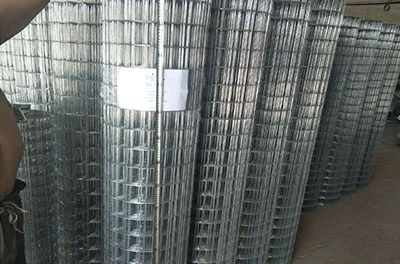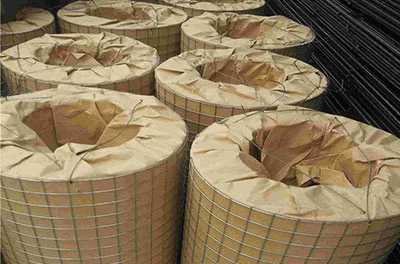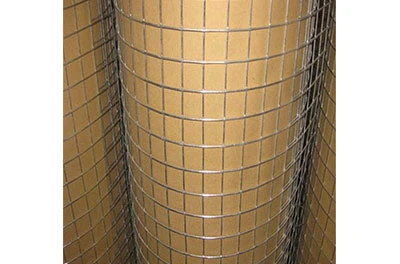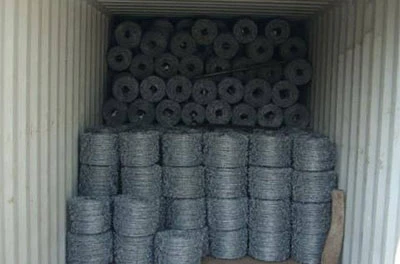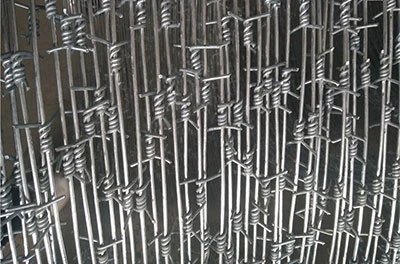Sep . 08, 2025 11:26 Back to list
Corner Bead Repair Methods for Damaged Walls
Walls define our rooms, but it's the crisp, clean lines of the corners that truly give a space its finished, professional appearance. The unsung hero achieving this sharp definition? The humble corner bead. This essential trim component, typically made of metal, vinyl, or paper-faced materials, protects the vulnerable outside corners of walls from damage while providing a straight guide for plaster or drywall compound application. Over time, however, even the sturdiest corner bead can succumb to impacts, moisture, or general wear and tear, leading to unsightly dents, cracks, rust, or peeling. Fear not! Repairing damaged corner bead is a manageable DIY task or a straightforward job for a professional, restoring both the aesthetics and structural integrity of your walls. Understanding the different types, particularly corner bead metal and specialized finishes like black corner bead, is key to choosing the right repair method and materials.

Understanding Corner Beads and Their Vulnerability
A corner bead is fundamentally a protective and form-giving strip installed on the external corners of walls and ceilings before finishing. Its primary functions are:
Protection: It shields the fragile drywall or plaster corner from knocks, scrapes, and impacts.
Guidance: It creates a rigid, straight edge for applying joint compound (mud), ensuring a perfectly crisp corner line.
Durability: It significantly reinforces the corner, making it far more resistant to damage than unprotected drywall alone.
The most common type, especially in residential and commercial construction, is corner bead metal. Traditionally made from galvanized steel, corner bead metal offers excellent strength and rigidity. It typically features a central spine with flanges extending at 90-degree angles, perforated to allow joint compound to key through and bond securely. Variations include vinyl-coated corner bead metal for enhanced moisture resistance and different flange designs (like "L" or "Tear-Away") to suit specific installation preferences.
Another variant gaining popularity, particularly in modern or industrial aesthetics, is black corner bead. This is usually standard corner bead metal that has been powder-coated or painted black. Black corner bead is often used intentionally as a design feature where the corner trim is left exposed, creating a striking, defined line against lighter wall colors. It can also be used under finishes, though its primary appeal is visual. While durable, the finish on black corner bead can be susceptible to scratches during installation or damage, requiring specific repair approaches if the exposed look is to be maintained.
Damage to any corner bead typically occurs through:
Physical Impact: Furniture bumps, moving objects, door handle strikes, or accidental kicks.
Moisture Exposure: Leaks, high humidity, or flooding can cause rust on corner bead metal or degradation of vinyl/paper beads.
Poor Installation: Insufficient nailing/screwing, inadequate embedding in compound, or using the wrong type for the environment.
Settling or Structural Movement: Minor shifts in the building framework can stress the corner.
General Wear and Tear: Over very long periods, even quality beads can deteriorate.
Mastering Metal Corner Bead Repair Techniques
Repairing damaged corner bead metal is the most common scenario due to its prevalence. The approach depends on the severity of the damage:
- Minor Dents and Dings:
* Assessment:If the metal is bent but not torn, and the flanges are still securely attached, a surface repair is possible.
* Tools/Materials:Utility knife, joint compound, taping knives (6", 10-12"), sanding block (120-220 grit), primer, paint, possibly fiberglass mesh tape.
* Process:
1. Clean: Remove any loose debris or old compound around the dent.
2. Feather Edges: Use the utility knife to gently scrape and feather the edges of any chipped compound surrounding the dent, creating a smooth transition zone.
3. Fill: Apply a thin layer of setting-type (quick-setting) joint compound directly into the dent using a small knife. For slightly deeper dents, apply a thin layer, embed a small piece of fiberglass mesh tape over it while the mud is wet, and then skim coat over the tape. Avoid overfilling.
4. Sand & Skim: Once the first coat is completely dry, sand lightly. Apply a second, broader skim coat to blend the repair seamlessly into the surrounding wall surface. Feather the edges out widely.
5. Final Sand, Prime & Paint: Sand smooth once fully dry. Prime the repaired area (essential to prevent flashing) and repaint the wall.- Rust Spots on Metal Corner Bead:
* Assessment:Surface rust or bubbling paint indicates underlying corrosion. This mustbe addressed to prevent further deterioration.
* Tools/Materials: Wire brush or sandpaper (coarse grit), utility knife, rust-inhibiting primer (zinc chromate or similar), joint compound, taping knives, sanding block, paint.
* Process:
1. Expose & Remove Rust: Use the wire brush or sandpaper to aggressively remove all loose paint and rust down to bare, solid metal. Extend the area slightly beyond the visible rust. Wipe away dust.
2. Prime: Apply a generous coat of high-quality, rust-inhibiting primer specifically designed for metal. Ensure complete coverage over the sanded area and slightly onto the surrounding sound finish. Allow to dry thoroughly as per manufacturer's instructions. This step is critical to halt corrosion.
3. Fill & Finish: Proceed as with a minor dent (Steps 3-5 above), using joint compound over the primed area to rebuild the profile and feather into the wall. Prime the entire compound repair before painting.- Severe Damage: Bent, Crushed, or Separated Metal Corner Bead:
* Assessment:If the corner bead metalis significantly bent, crushed, torn, or if its flanges have pulled away from the wall, partial or full replacement is usually necessary.
* Tools/Materials: Pry bar/cats paw, hammer, tin snips, aviation snips, drill/driver, drywall screws (1-1/4" or 1-5/8"), new corner bead metal (matching profile), joint compound, taping knives, sanding block, primer, paint, safety glasses, gloves.
* Process:
1. Remove Damaged Section: Carefully pry off the damaged section of the corner bead metal. Use the cats paw to pull nails/screws. Cut along the central spine with tin snips if removing only a portion. Be cautious not to damage the underlying drywall excessively.
2. Prepare the Corner: Remove any old nails/screws, loose compound, and debris. Check the drywall beneath; if crushed or soggy, it may need cutting out and patching first. Ensure the corner substrate is solid and flat.
3. Cut New Bead: Measure the length needed for the replacement corner bead metal. Cut it precisely with aviation snips (designed for cutting sheet metal profiles cleanly).
4. Install New Bead: Position the new corner bead metal perfectly on the corner. Secure it using drywall screws driven through the flanges every 6-8 inches. Sink the screw heads slightly below the surface but avoid crushing the metal. Ensure it sits straight and true.
5. Embed & Finish: Apply joint compound over the flanges of the new corner bead metal, forcing mud through the perforations. Use the taping knife to smooth the compound, feathering it widely onto the wall. Apply 2-3 coats, allowing drying and sanding lightly between coats, to build a smooth, invisible transition. Prime and paint.
Special Considerations for Black Corner Bead Repair
Repairing black corner bead presents unique challenges, primarily when it's intended to be an exposed design element rather than a substrate for compound and paint. The goal is often to repair damage while preserving the black finish.
Exposed Black Corner Bead (Design Feature):
Minor Scratches/Scuffs: Clean the area and lightly touch up with high-quality, matte or satin black enamel paint using a fine artist's brush. Test the paint match in an inconspicuous spot first.
Dents on Exposed Bead: This is tricky. Very minor dents can sometimes be carefully pushed out from behind if access exists (e.g., in a soffit) using a flat tool and gentle pressure. If not, the dent may need to be filled. Use a very small amount of automotive body filler or epoxy putty matched as closely as possible to black. Apply meticulously, sand smooth with ultra-fine grits (400+), and touch up paint. Achieving an invisible repair is difficult; often replacement is better for noticeable damage.
Severe Damage (Exposed): Replacement is almost always the best solution for significant dents, bends, or scratches on exposed black corner bead. Ensure you source an exact match in profile and finish (matte, gloss, texture). Carefully remove the damaged section and install the new piece, securing it discreetly through the flanges. Seamless joining of two pieces for exposed bead is challenging.
Painted-Over Black Corner Bead: If the black corner bead was simply used as a substrate and is covered with wall compound and paint, repair it using the standard techniques for corner bead metal outlined above (Minor Dents, Rust Spots, Severe Damage). The black finish underneath is irrelevant in this case, as it will be completely covered by compound and paint.
Prevention is Paramount:
Choose Quality: Opting for robust, well-protected corner bead metal from the outset minimizes future problems. Beads with thicker gauge metal and durable coatings (like galvanization plus powder coating on black corner bead) resist dents and corrosion far better.
Proper Installation: Ensuring the bead is securely fastened with adequate screws/nails and properly embedded in compound creates a solid, long-lasting foundation.
Protect Corners: During construction, moving, or renovations, use corner guards to shield vulnerable corner beads from impacts.
FAQs About Why Choose Chengsen for Your Corner Bead Needs?
What are the key advantages of Chengsen's metal corner bead versus cheaper alternatives?
Chengsen's corner bead metal is manufactured from higher-grade galvanized steel, ensuring superior thickness (gauge) and a more robust zinc coating. This translates directly to exceptional resistance against denting during installation and everyday impacts, significantly reduced risk of rust formation even in moderately humid environments, and overall longevity that protects your walls for decades. Our strict adherence to international standards guarantees precise angles and perforations for optimal compound adhesion and a perfectly straight corner line, saving time and frustration during finishing.
How does Chengsen ensure its black corner bead finish lasts and resists damage?
Our black corner bead undergoes a specialized powder-coating process after galvanization. This creates a tough, bonded polymer layer that is far more resistant to chipping, scratching, and UV fading compared to standard paint. This is crucial whether the bead is intended for an exposed industrial look or simply provides a superior substrate under plaster. The powder coating adheres tenaciously to the galvanized base, offering dual-layer protection against both corrosion and physical wear.
Can Chengsen produce custom profiles or lengths for unique corner bead requirements?
Chengsen excels at producing custom corner bead metal profiles and black corner bead finishes. Whether you need a specific flange width, angle variation, unique perforation pattern, non-standard lengths, or a bespoke powder-coat color beyond standard black, we can collaborate with you to design and manufacture the exact solution your project demands.
Why is consistent quality control vital for reliable corner bead performance?
Inconsistent corner bead metal – with variations in gauge, coating thickness, straightness, or perforation quality – leads directly to installation headaches, poor adhesion of joint compound, visible imperfections in the finished corner, and premature failure (like rust or detachment). Chengsen implements rigorous quality control checks at every manufacturing stage, from raw material inspection to final packaging. This meticulous process ensures every piece of corner bead we ship meets our exacting standards and the relevant international specifications, guaranteeing consistent performance, ease of installation, and long-term reliability on your job site.
How does Chengsen's experience translate to better service for corner bead customers?
With 25+ years focused on steel grating and related profiles like corner bead metal, Chengsen possesses deep technical knowledge and practical understanding of what makes a high-performing product. Our 18 years serving global export markets mean we are experts in navigating logistics, documentation, and meeting diverse international requirements. This vast experience allows us to proactively advise customers on the optimal corner bead solution for their specific climate, application (standard or exposed black corner bead), and performance needs. We anticipate challenges and deliver solutions backed by reliable support and efficient service.
Investing in Quality for Lasting Results
Repairing a damaged corner bead effectively restores both the beauty and the resilience of your walls. While the techniques – from simple filling to complete replacement – are manageable, the foundation for a long-lasting repair, or better yet, prevention of damage, lies in the quality of the corner bead metal itself. Opting for premium products manufactured with high-grade materials, rigorous standards, and protective coatings like those found on durable black corner bead significantly reduces the likelihood of dents, rust, and premature failure.
By understanding the types of damage, mastering the appropriate repair methods for both standard and black corner bead, and choosing high-quality materials from experienced manufacturers, you ensure your corners remain sharp, protected, and visually appealing for years to come. It’s an investment in the integrity and aesthetics of your space that pays dividends in reduced maintenance and enduring satisfaction. Let your walls stand proud with perfectly defined, well-protected corners.
Latest News
-
Electro and Hot-Dip Galvanized Welded Wire Mesh Roll 1/8–4”
NewsNov.17,2025
-
Wire Mesh Conveyor Belts - Stainless Steel, Heat-Resistant
NewsNov.17,2025
-
Durable Circular Grating Solutions for Industrial Applications
NewsNov.17,2025
-
2m x 1m x 0.5m Galfan Gabion Basket Retaining Wall Design
NewsNov.17,2025
-
Ferrotech Grating: Durable Solutions for Modern Industry
NewsNov.17,2025
-
Trusted Aluminum Grating Manufacturers | Durable & Light
NewsNov.17,2025
Our company owns has excellent CAD steel grating drawing designers, who can provide customers with perfect steel grating layout design and better meet customers' special requirements for products. We have been adhering to it the business tenet of "quality first, customer first", with high-quality products, reasonable prices, and the fastest delivery time, we wholeheartedly provide customers with a full range of services! Welcome new and old customers to cooperate sincerely and create brilliance together!
Contact Us
WELCOME TO OUR COMPANY!
Thank you for your interest in our services! If you have any questions or wousld like to book a service, please don’t hesitate to contact us. Our team is dedicated to providing you with the highest level of service and support, and we are committed to working with you to make your event a success.

Service Email

Service Phone
Product Center
Contact Us
- Phone: +86 +86 15733154345
- E-mail: sales@chengsenchina.com
- Address: B1213 GLOBAL CENTER, NO.226 ZHONGHUA NORTH STREET, SHIJIAHUANG, CHINA



